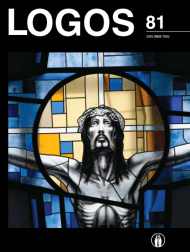Mircea Eliade’s Šventybės Samprata Techninio Reprodukuojamumo Epochoje
The Conception of the Holy by Mircea Eliade in the Age of Mechanical Reproduction
Author(s): Tadas ČapanauskasSubject(s): Epistemology, Social Philosophy, Existentialism, Philosophy of Religion, Ontology
Published by: Visuomeninė organizacija »LOGOS«
Keywords: holy; age of mechanical reproduction; homo religiosus; hierophany; aura;
Summary/Abstract: This article discusses the conception of the Holy in the age of mechanical reproduction formulated by the Romanian-born philosopher and religious scholar Mircea Eliade. The conception refers to homo religiosus in whom manifestations of sacredness and holiness provide meaning. In this article the age of mechanical reproducibility reveals problems for the existence of homo religiosus. In the age of mechanical reproducibility, the phenomenon of the Holy encodes religious archetypes and gradually loses the primary ontological status. A change of place and time lead to religious archetypes undergoing a desacralization process. Religious symbols and marks are abundantly reproduced by modern technical support. The analysis of the conception of the Holy by Mircea Eliade provides an opportunity to consider the age of mechanical reproduction from the perspectives both of the archaic and the contemporary religious man, where a person is understood not only as a process of chemical reactions, mental formations, nerve impulses, but also as a whole conscious entity with a permanent possibility to choose, and being independent from the forces of historicism. Studies of Mircea Eliade’s homo religiosus also uncover an attempt to deconstruct the modern secularized person’s thinking pattern, revealing an interface between postmodern thinking and primitive religious archetypes. Homo religiosus in Eliade’s works is particularly relevant in the context of the modern world of technology and secular society.
Journal: LOGOS - A Journal of Religion, Philosophy, Comparative Cultural Studies and Art
- Issue Year: 2014
- Issue No: 81
- Page Range: 193-203
- Page Count: 11
- Language: Lithuanian

